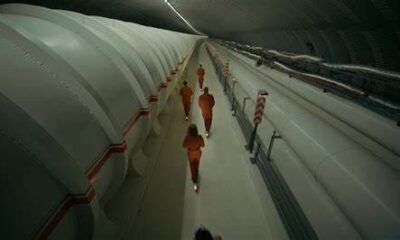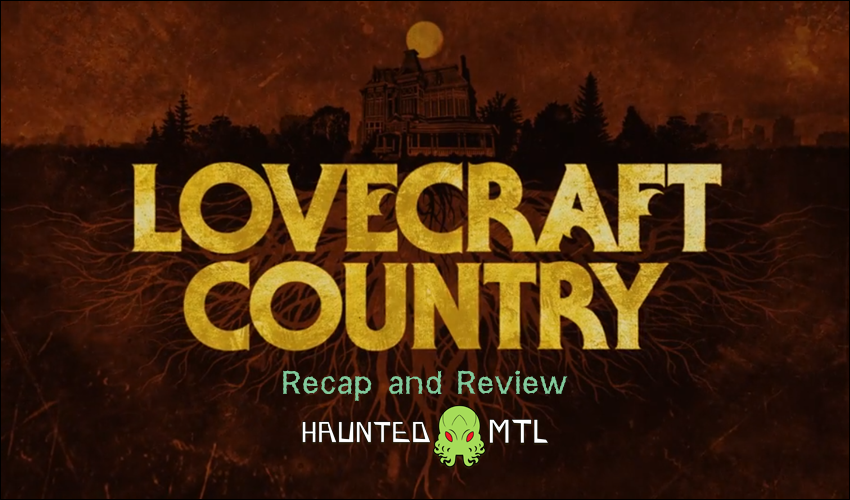
Lovecraft Country: S1E4
This week we return to serialization in Lovecraft Country after the brief sojourn into haunted house territory. Unfortunately though, narrative shortcuts and sloppy attention to detail doom this Goonies-lite exploration episode.
Read on, if “ye” dare.
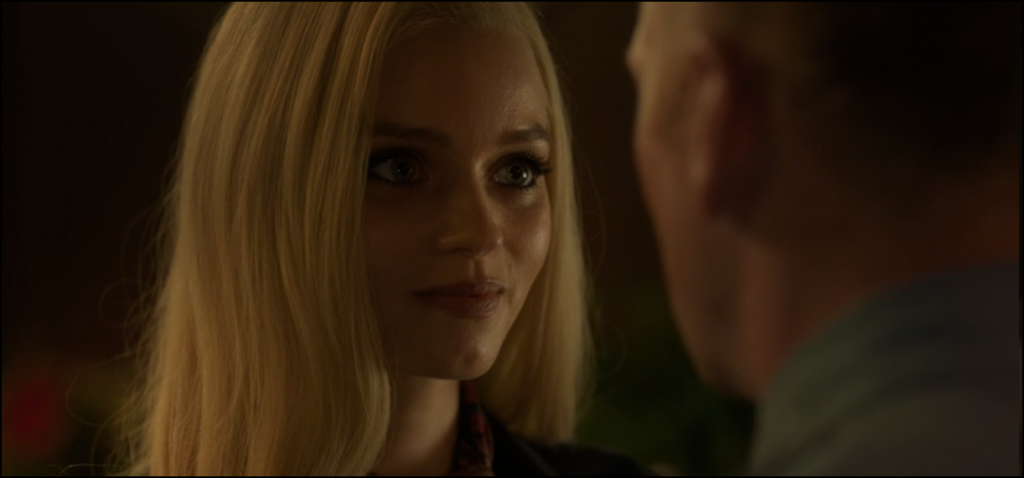
The story so far…
Our A-plot this episode, “A History of Violence,” focuses on Atticus, Leti, and Montrose on a trip to Boston to seek out the missing pages of the Book of Names. Atticus is convinced he can re-purpose the magic in those pages to project everyone in his life. Leti expresses intense frustration at Atticus’s compartmentalizing of information after Christina Braithwhite pays her a visit. Lastly, Montrose, drunk and reeling, studies the book of information from the cult given to him by a dying George and then proceeds to burn the book, hoping to protect Atticus and the others.
Atticus, Leti, and Montrose travel to Boston in the woody, joined by Hippolyta, Diana, and Tree. Later that night, Tic’s Trio returns to the museum, let in by a guard who also seems to be a contact of Montrose’s, and they uncover the hidden series of chambers and tunnels seemingly constructed by Titus Braithwhite. The Trio encounters a number of challenges and traps and also somehow find themselves just under Leti’s recently acquired haunted house in Chicago until uncovering a ship of corpses and an undead Arawak guardian, Yahima, who happens to be an intersex “two-spirit.” They discover that they were being compelled to translate the pages by Titus, and their people were killed to force the issue. Tic’s Trio manages to retrieve the missing pages, escape the flooded tunnels, and find refuge in Leti’s home with Yahima in two.
Then Montrose slashes the throat of Yahima is a dazzlingly self-destructive choice.
The rest of the episode revolves around the other women of the show. Hippolyta has clearly taken the orrery from Leti’s house, the same orrery that Christina Braithwhite seems to be seeking in the episode. The orrery also seems to model a distant solar system. Hippolyta and Diana share a cute moment in a star-dome, where Hippolyta reveals she had discovered and named a comet, but the credit was given to a white girl. Later the pair are returning home to Chicago, confused at how Tic’s Trio got there without them. Hippolyta notices that Diana is drawing on George’s atlas, noticed the route to Devon County, where Ardham is found, is marked, and decides to head that way for answers.
Christina, trying to meet her own magical goals attempts to strong-arm Leti but is kept at bay by the magical energies of Leti’s house. Christina drops that Atticus attempted to kill her, as asks Leti for the orrery in the house. Christina spends time in the neighborhood, waiting on the orrery or some other purpose, and is targeted by the same cops who went after Leti last episode. It becomes clear that these cops are tied to another one of the many (maybe even 35?!) magical lodges. This time, however, Christina vanishes and is instead saved by her servant, William. Could Christina and William be one-in-the-same? That might complicate the next bit.
Meanwhile, Ruby, Leti’s half-sister, makes the unfortunate discovery the department store position she craved was filled by another woman. Ruby goes to Sammy’s bar to let off her blues in some fantastic singing that doesn’t seem to inspire many reactions. She then gets introduced to William who seems to promise her the world before seducing her.
Magic has its price, however. Let’s hope the price is not too steep for Ruby.
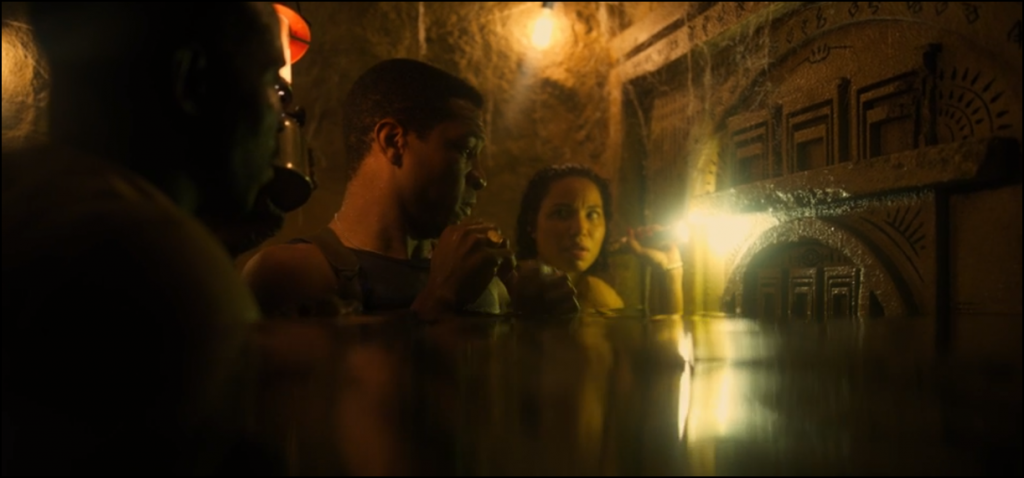
How it worked out…
It takes about 15 or so hours to travel from Chicago by Boston, according to Google maps. I only mention this because, within the span of two hours, Tic, Leti, and Montrose somehow manage to use an underground passage from a museum in Boston and arrive at the secret tunnel beneath Leti’s new house. Spatial anomalies are fine and welcome in creating unsettling weirdness in Lovecraftian works, but the key is that it needs to be established first. There is no indication that the laws of time and space are warping around Tic and company in the tunnel, all that there is is the rising tide. So unless there was some sort of time and space shenanigans that were established prior to their arrival at Leti’s elevator then the episode absolutely went off the rails, very badly.
It might seem a bit cynical and unfair of me to latch onto a continuity error such as this, but it is a perfect example of some of the narrative leaps that “A History of Violence” took. So many puzzling choices just to set up circumstances in non-organic ways. Why does Montrose burn the book? Because it makes it easier to set him up to tag along. Why is everyone pissed off at an obviously traumatized Atticus for trying to protect their lives? What happened to Tree? Does the hidden trigger in the museum ever get activated when someone is cleaning the alligator statue?
Even worse, the strength of the show, the themes of the existential horror faced by people of color, was largely absent. We get references to colonialism, Hippolyta being unable to take credit for the cosmic object she saw, and a made-up story about a knot. We do get something with Rose, but it’s all a set-up for next week’s episode.
Instead, we end up with a lukewarm riff on Journey to the Center of the Earth only even more nonsensical than that pulp adventure. Solid performances across the cast can’t even really save it, either. We’re now just mostly hitting the same notes on the characters with a slight thawing of the relationship between Atticus and Montrose.
Lovecraft Country‘s adventurous return to serialization moves the story forward, technically, but seems to be mostly moving pieces around to get the players where they need to be for something more significant to come. Sloppy attention to detail, however, sinks what could have been a fun romp. There is little terror, Lovecraftian or otherwise, to be had, however.
I give the fourth episode, “A History of Violence” two and a half Cthulhus.
 (2.5 / 5)
(2.5 / 5)
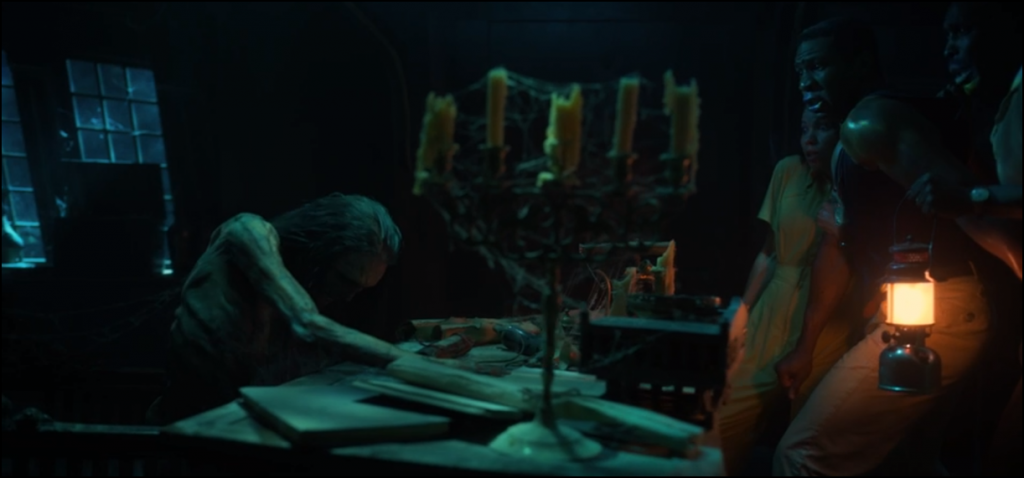
Miskatonic Musings
What do we have of note in this edition of the Miskatonic Musings?
- Of course, the Freemans were never enslaved. It’s in the name… Free Man.
- We also see a little bit more of the kid who we assume will be history’s very own Emmett Till.
- Speaking of tragedy, Montrose references Tulsa as he burns the cult’s book.
- Yahima Maraokoti is said to be from Guyana and is a two-spirit. There is a history of “two-spirit” intersex individuals in Native American culture and a fascinating example of differing perspectives on sex and gender in indigenous culture.
- So, Montrose is gay. His friend from the bar, Sammy, in episode one, was caught receiving oral sex. Tree seems to hint at this in the episode.
- With that said, Montrose killing Yahima feels gross and unnecessary, but it may also make a perverse sense to him; he may be grappling with his own queerness and Yahima represents an uncomfortable blurring of boundaries for him.
- Literary references in this episode specifically revolve around Journey to the Center of the Earth. The episode borrows heavily from that sort of pulp adventure storytelling. Not entirely successfully, mind you.
- There is also a rather laconic retelling of the events of “Genesis.”
- My music pick for this episode? Rihanna’s “Bitch Better Have My Money.”
What did you think about “A History of Violence?” Let us know in the comments!
Movies n TV
Wheel of Time A Question of Crimson Is a Political Espionage Delight
Episode two of Wheel of Time felt like the beginning of a long journey. Stories are unfolding, lives are changing, and blood is spilling.
Let’s discuss.
The story
We begin this episode in the past with Elayne’s mother, Queen Morgase. It turns out her rise to the throne was a bit, shall we say, cutthroat. So when she shows up at the White Tower, Siuan is concerned.
She might have reason to be, too.
Meanwhile, Rand, Egwene, Moiraine, Lan and Aviendha are in the Spine of The World. As they travel through some of the most breathtaking lands I have ever seen on a TV show, Egwene is plagued with nightmares. We think at first that’s just her trauma working itself through her system. But we soon find out that it might not be that straightforward.
Finally, Perrin returns home to heal after his hand is almost cut in half. But when he gets there he finds the town has been infested by Children of The Light. And they’re looking for him.
What worked
There was something heartwarming in this episode about political espionage and choking religious persecution. And that is Elayne’s relationship with her family.
I have consumed a lot of fantasy content with royal families. And I have never once heard a princess call her mother ‘Mum’. I’ve never seen royal siblings get along. And I have sure as hell never seen a princess have a good relationship with her step-parent.
This was refreshing. Even though Queen Morgase is kind of a horrible person she seems like a good mother. And that’s an unexpected delight.
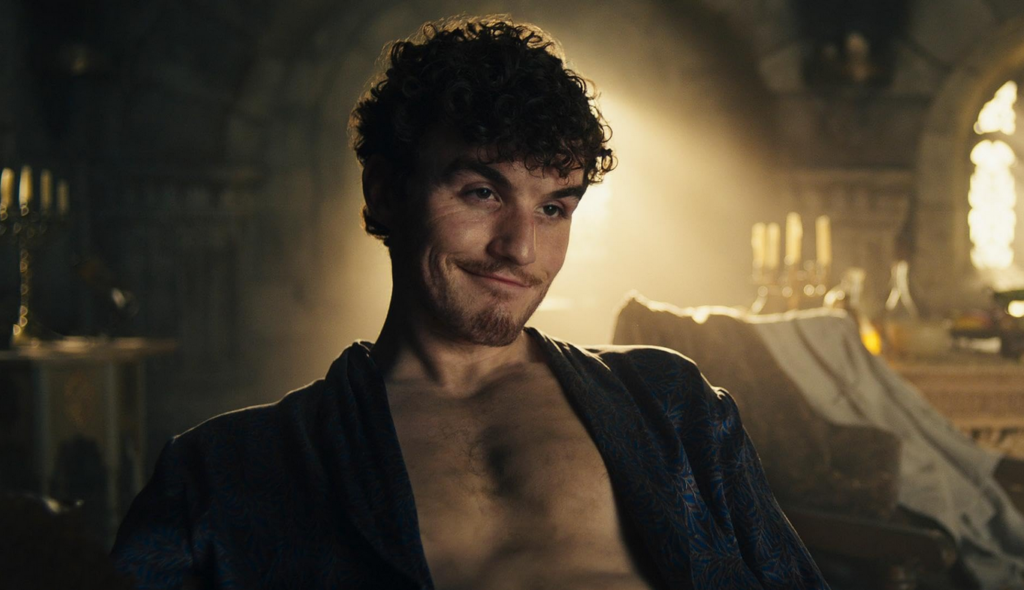
Of course, this is just one storyline among many. And while this can sometimes be overwhelming, in this case it wasn’t.
I’ll be honest, some of these storylines are going to drag for me. I know this because I’ve read some of the Wheel of Time books and I have an idea that not all the characters exactly pique my interest.
No one likes all the characters. No one likes all the storylines. While I am here for the political espionage between Queen Morgase and Siuan, not everyone likes it. While others might be fascinated with Selene trying to win Rand back, I couldn’t care less.
Having multiple storylines keeps everyone’s attention better. So long as things don’t get out of hand. Things can easily get out of hand. But this seems to be managed well.
So far.
What didn’t work
As I mentioned above, I’m not thrilled with Rand’s story at this point. And while it’s fine to not like a storyline when there are this many to choose from, it’s not fantastic that the one I like the least is the one involving our two main characters. And anytime we were with the team at the Spine of The World, the only thing that brought me joy was Moirain’s hat. It reminded me of Stockard Channing’s hat in Practical Magic.
The problem is that Rand is Charlie Brown with controversial magical powers. He is boring, serious, and pessimistic.
And yes, I understand that he has a heavy emotional burden and he’s the Dragon Reborn and that’s quite taxing and all. But let’s be fair, there isn’t a single person in this show that doesn’t have a heavy burden. And most of them manage to be fun occasionally.
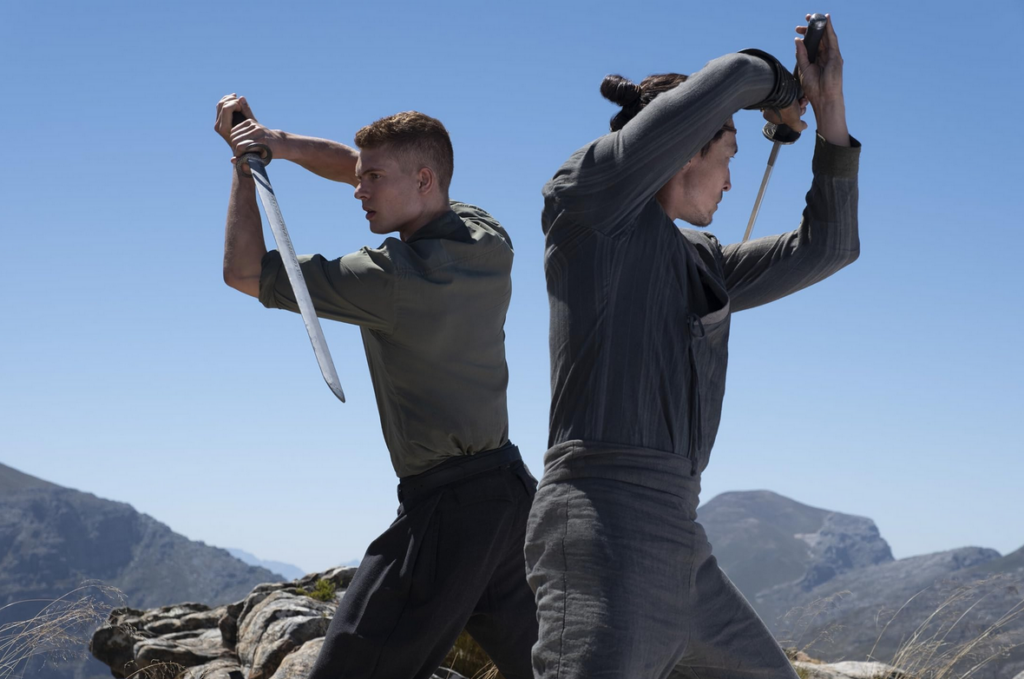
All that being said, this episode of Wheel of Time did exactly what it needed to do. It set up conflicts at each of the three locations. It established emotional ties between the characters and the events. And it established goals for everyone.
This was, in short, a solid episode. Not groundbreaking, not mind-blowing or life changing. It was simply good. It was entertaining and moved the plot forward.
Well done.
 (3.5 / 5)
(3.5 / 5)
Movies n TV
Wheel of Time Returns With A Bang
Wheel of Time is back for season three. There are mixed feelings regarding this. Last season, there were some serious pacing issues. And some serious sticking to the book’s storyline issues. But we’re two seasons in, and we don’t give up so easily. So let’s dive into episode one, To Race the Shadow.
By the way, I highly recommend watching this episode with the subtitles on. You’ll see why.
The story
We begin this episode with Liandrin facing a trial of sorts for her rampant betrayal. She does her best to gaslight her Aes Sedai sisters into thinking that Siuan Sanche is the real traitor.

When that doesn’t work, she reveals how many Black Aes Sedai have actually infiltrated the tower.
Spoiler, it’s a lot.
In the aftermath, our whole team gathers to drink and enjoy one night of relaxation before they head out to the Tear to form an army for Rand. All is going well until they’re attacked by myriad creatures and a sentient axe.
What worked
This episode was long. It had a run time of an hour and eleven minutes. And a lot of that run time was spent in heavy dialog scenes.
Fortunately, these were well-done scenes.
If you’re going to have a lot of talking scenes, there are good ways and bad ways to do it. Last season, we saw lots of examples of the bad way to do it. But this episode did it well. For one thing, other things were going on while conversations were taking place. The characters are drinking, playing games, walking through an interesting city. And the scenes themselves didn’t stretch out. They weren’t repetitive. We heard what the character had to say, then we moved on.
It was also nice that the point of these scenes wasn’t just info dumps. We had character development. We had romantic interactions. We had plot development and foreshadowing.
Overall, this episode felt like what it was. A moment of calm before a storm.
Taking a step back, I’d be remiss if I didn’t address the fight scene at the start of the episode. Because it was epic.
The magic looked amazing. The martial arts that went along with it looked fantastic. The costumes were beautiful. It was just incredibly fun to watch.
More than that, it was emotional. We lost some characters in that fight that were important. And it was clearly emotionally shattering for many of our characters, who found themselves betrayed by people they trusted.
So many of them.
It was a great way to open the season.
What didn’t work
Despite that, this episode wasn’t without its flaws.
First off, there were a lot of dialog scenes. And they were good scenes, as I’ve already discussed. But it was one after another after another. And when your episode is, again, an hour and eleven minutes, it’s maybe a little much to have so much chit-chat. Couldn’t some of these conversations, important as they were, have been moved to maybe another episode?
Finally, I want to talk about Egwene’s travel through the arches.
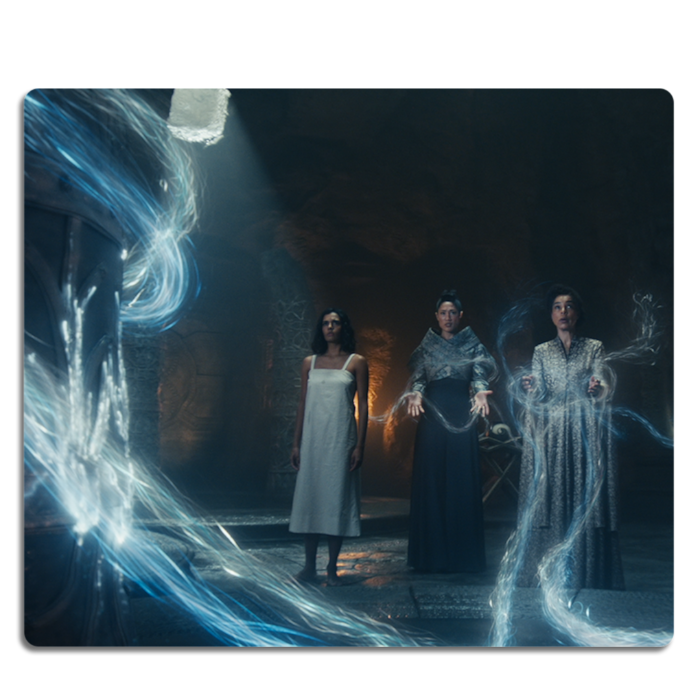
I feel like maybe there were some deleted scenes here. Because there must have been more to that visit than what we saw, right?
We could have seen Egwene battle Rand. That would have been badass and emotionally devastating. We could have seen her with a quiet life with Rand back home at the Two Rivers. We could have seen anything except for the quick clip of Rand in a bloody river, followed by Egwene being shoved back out in a bloody shift.
Bad job. But at least it wasn’t an extended scene of Moiraine collecting bathwater, and then taking a bath while looking sad. If we’d started this season with another scene like that, it might have broken my brain.
Amazon dropped the first three episodes at once. So we’ll be back soon to talk about episode two. See you then.
 (4 / 5)
(4 / 5)
Movies n TV
Entertaining as hell: Eight Legged Freaks (2002) Review
Early 2000s is a special era for the industry. It accepts the cheesiness and corniness of movie making, in turn producing some gems in their own right. Eight Legged Freaks starring David Arquette and young Scarlet Johanson is a horror comedy about giant spiders who overtake a small town. As crazy as that premise sounds, the movie surprisingly has a ton of heart and is super entertaining. Let’s review, shall we?
Plot
We start Eight Legged Freaks with a shot of toxic waste spilling into the water supply of Joshua, a spider farm owner. He is friends with Mike, one of our protagonists, who is a science geek and a spider enthusiast. Mike notices something quite right upon visiting Joshua, but no one takes him seriously. We are then introduced to the rest of the crew. Mike’s mother Samantha, the town sheriff, is too busy chasing Ashley, his sister, who is dating the town mayor’s son Bret (something Samantha does not approve of). We also have Chris, who returns to the town to save his father’s legacy in the town mines. He has opposition from Wade, Bret’s father, who wants to use the mines for his business ventures. Lots of drama going on that will only get juicier once the spiders get loose.
The creepy crawlies quickly dispose of Joshua and make their grand appearance after Ashley rejects Bret’s advances, abandoning him in the middle of a desert. A glorious chase sequence ensues as the spiders make their way towards the town, wreaking havoc on its residents. In a true horror fashion (which the movie acknowledges), it takes some convincing from Mike and then from Samantha for the town to take the threat seriously. The tongue-in-cheek style of narrative adds the comedy aspect to a movie that would otherwise burn out fairly quickly.
The remaining characters hide out in a shopping mall as it’s the only somewhat sturdy building in the area. This doesn’t last long as the spiders break in, forcing them to run through the mines. Their resources to fight the creepy crawlies off are limited as the methane gas doesn’t allow them to use firearms. Such conditions require resourceful thinking from Chris, who uses perfume to fend off the leader of the spider group and save himself during the climax of the movie.
Character dynamics are not forgotten once the action kicks in. We have Chris confessing his long-term feelings for Samantha which she knew all along, which provided some comedic relief. Bret also reunites with Ashley and apologises for being an asshole. Mike finally gets the appreciation he deserves as his knowledge saves the townsfolk more than once during the whole ordeal.
We end the movie with the town’s radio show person telling the story as an urban legend during his segment. This brings it into question – how much of it happened the way he said it did? We can only guess…
Overall thoughts
Eight Legged Freaks is a fun creature feature with some self-aware commentary on genre tropes that doesn’t take itself too seriously. The acting is good, the pacing fitting and the characters are likeable enough for you to want them to make it through. Definitely a must watch, if you don’t suffer from arachnophobia, that is.
 (5 / 5)
(5 / 5)


